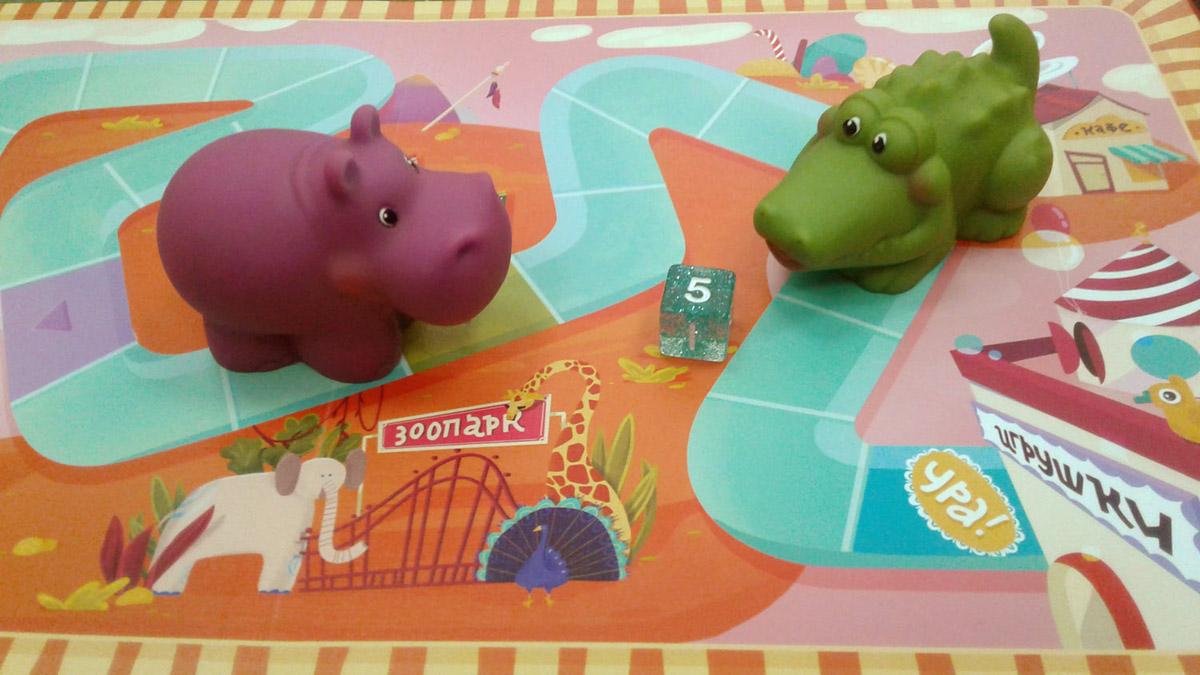Each game has some age range in which it is interesting and has developing potential. If the child is still too small for some game, then he tries to evade …
Game mechanics. Armor, the idea of zero and the unnoticed speech therapy
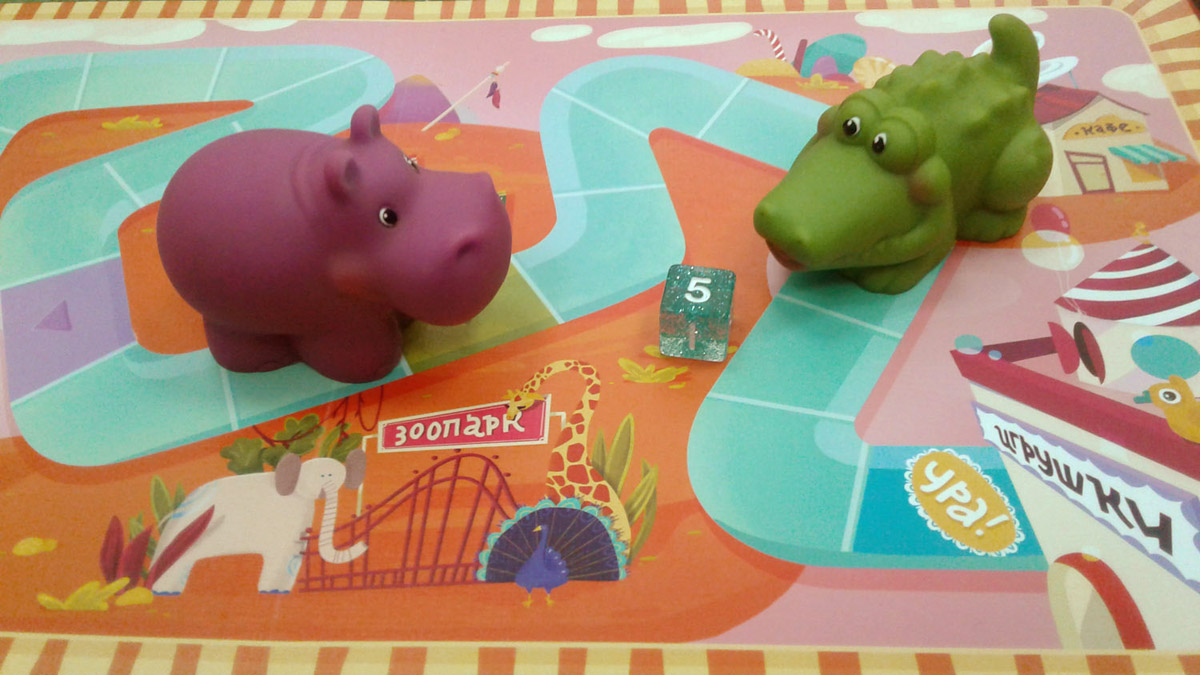
Each game has some age range in which it is interesting and has developing potential. If the child is still too small for some game, then he tries to evade it, because it is so complicated for him that it turns into a tedious and burdensome educational lesson from pleasant activity (where, in addition, he constantly feels unsuccessful). On the contrary, if a person from the game has already grown, then he is not interested in playing it, because she is too light. As an option, he continues to play, but already in a rest format, because the game no longer represents an intellectual call.
Some games have a range in which they are interesting and developing is very large. For example, the skill of playing chess can be improved all your life. In other games, he is very small. For example, the games of the genre “Brodynze with a cube” are interesting and developing from about five to six years. We are now talking about those games that are almost completely reduced to the mechanics throw a cube and take as many steps that have fallen. This, in particular, is all kinds of “snakes and stairs”.
In order for the child in general to play such a game, he must already be able to count from one to six, albeit not very confident, and identify these numbers on a cube. At four years old, this is still inaccessible to many children, and at five they can mainly already cope with this.
It is interesting that one of the main developmental tasks that boils solve is the beginning of the formation of the idea of zero as a reference point. When the children are taught to count, they usually count with a unit: one, two, three, four … Therefore, when the child throws a cube and begins to move the figure, the cage on which the figure was originally, he takes as a unit:
– one (the figure stands), two (the figure takes the first step), three (the figure takes the second step) …
It takes quite a lot of time before the child manages to connect the number on a cube with the number of steps and remember that one is when the figure took one step, and when it is still standing, it is not necessary, because it is still no one I did not take a step. For many five -year -old children, this is a complex thought that you need to enter.
The second difficulty they encounter is synchronize the score with the movement of the figure. Many five -year planes do this: they count out loud (they think correctly), and with their hands they rhythmically rearrange the figure from the cage to the cage, but do these two things slightly at different speeds. As a result, the child seemed to count everything correctly, and the figure was completely different from where necessary.And at this moment, you need to ask the child to count more slowly and make sure that the figure takes a new step only when he calls a new number. What is happening at this moment? Counting, which is still something like a rhyme or a rhyme for a child, is more consciously applied to specific objects.
If you look from the point of view of the action program, then here the program consists of at least two steps: 1) roll the die (fixing the result of the throw) and 2) count as many steps as the die has.
Additional elements such as snakes and ladders, which teleport the chip a few cells forward or backward along the track, solve two problems. First, it is an exercise in attention. Every time the child makes a move, he needs to check (and this is already the third step in the action program!), whether it is necessary to jump from this cell to some other one. And this is quite a difficult task, because you need to take into account the direction of the arrow. Often children take the end point of the teleport as the starting point – noticing the very fact of the presence of an arrow, but not considering where it points. The second point is that the game becomes less predictable, and the child gets emotionally involved in it: he is afraid of getting into a cage that will send him back. and really wants to get on the cell that will send him forward. It adds an element of excitement.
By the age of six, the child already confidently counts within ten, and the mechanics of moving the figure through the roll of the die basically exhausts its developmental potential. It is automated, and all sorts of additional elements of mechanics come to the fore. Here is, for example, a walker from the Encyclopedia of Professor Fortran. Here on the track there are many symbols with different options for additional actions. The player will often need to stop and look at the legend what to do next. If he tries to remember which icon means what, it will also be a good exercise for memory.
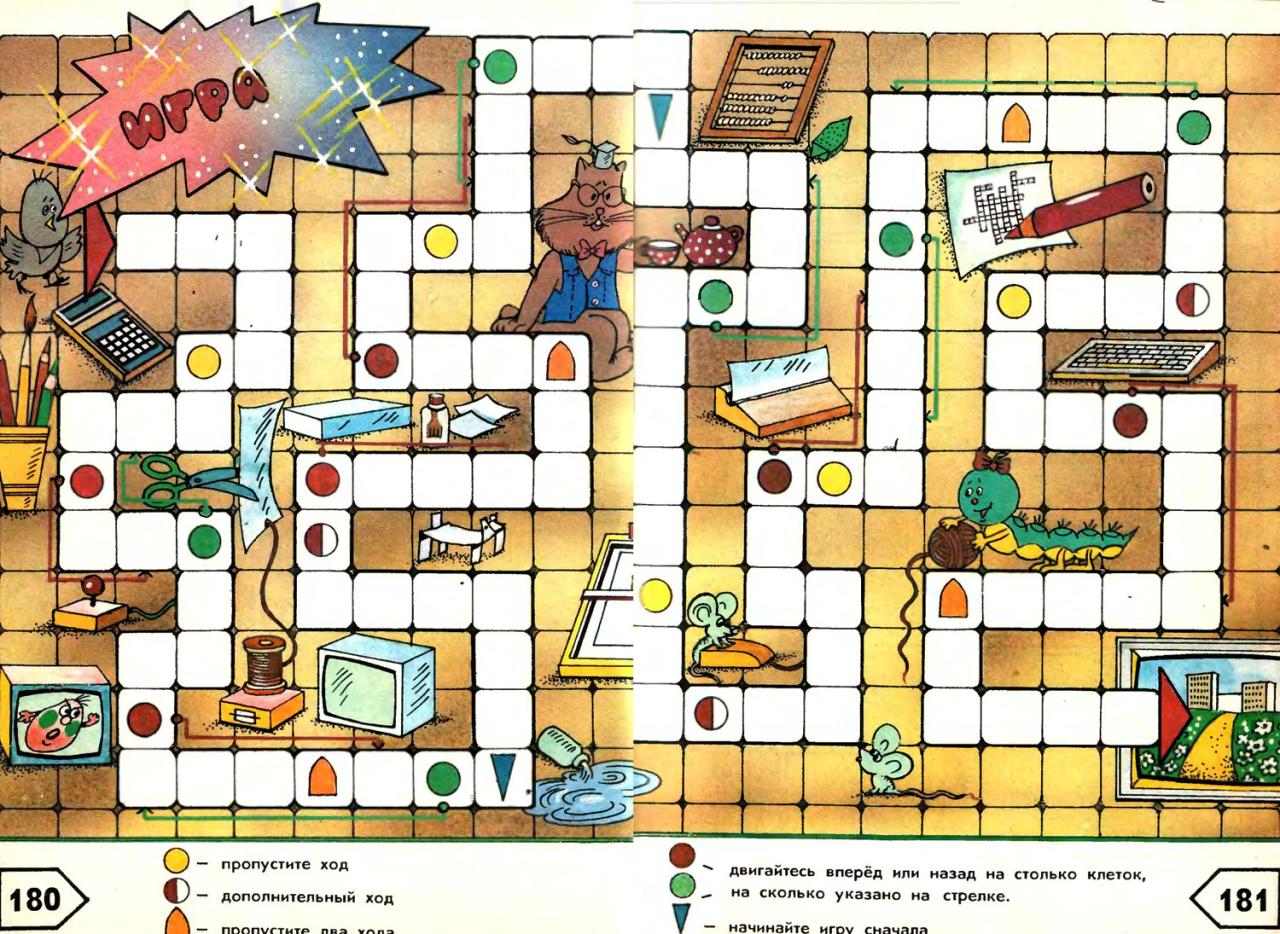
Adding tasks
You can complicate the walker with tasks. By the time the child turns six, he already knows how to roll the die, identify the number on it and move the figure exactly as many cells as necessary. At this moment, walkers with phantom mechanics become relevant for him.
A variant of a walker with phantoms is, for example, the Emerald City. I’ll make a reservation right away that this is not the most typical example, because the cooperative mechanics are used here (and we will still need this game to talk about cooperatives), so here we will be more interested in all sorts of additional elements. The first thing that is curious here is the cube: it does not indicate the number of steps, but a mini-exercise for fine motor skills: push the chip, toss the chip, roll the chip down the hill. This all requires subtle hand and finger movements, which are useful as part of the system for preparing the hand for writing.The idea of mini-exercises as such is very good; but some icons, unfortunately, are rather non-obvious. Children hardly recognize them and regularly confuse them.
Tasks in the Emerald City are selected so that it develops speech and prepares for school. For example, don't move until the next move is an exercise in self-control. A child who has learned to inhibit the desire to spin, spin, jump up and run will be able to sit quietly at his desk at school. “Name five dishes”, “say a tongue twister” are speech therapy exercises for vocabulary and sound pronunciation. After the first few games, when the tasks are already familiar, it makes sense to vary them – replace five dishes with five fruits, five animals, etc., change one tongue twister for another. The ultimate goal here is for the child to be able to speak clearly and fluently without having to reach into his pocket for a word in the middle of a sentence. At school, this is a very sought-after skill – a child needs it every time a teacher asks him a question. In the game, as is clear, the child performs such exercises much more willingly than when the mother puts him at the table and says: “So, now we will do the homework of the speech therapist.” Physical education cards, such as jump in one place, crawl on all fours – this is the equivalent of a physical education minute. Firstly, they allow you to unload the muscular apparatus, especially the back: at the age of six, the child already has to sit at the table a lot (and he also plays board games at the table), and physiologically it is difficult for him to sit still for so long. Secondly, it contributes to the development of motor coordination. The hourglass, which sets the pace of the game, teaches the child to keep within the allotted time – also an important skill for a school where there are many children in the class, and they all need to complete tasks at about the same pace.
Accordingly, the period when the Emerald City is exactly an educational game falls on about 6-7 years. In the year before school, she contributes to the preparation for school, and even in the first grade it is good to play it for the development of speech, especially if there are any speech therapy problems.
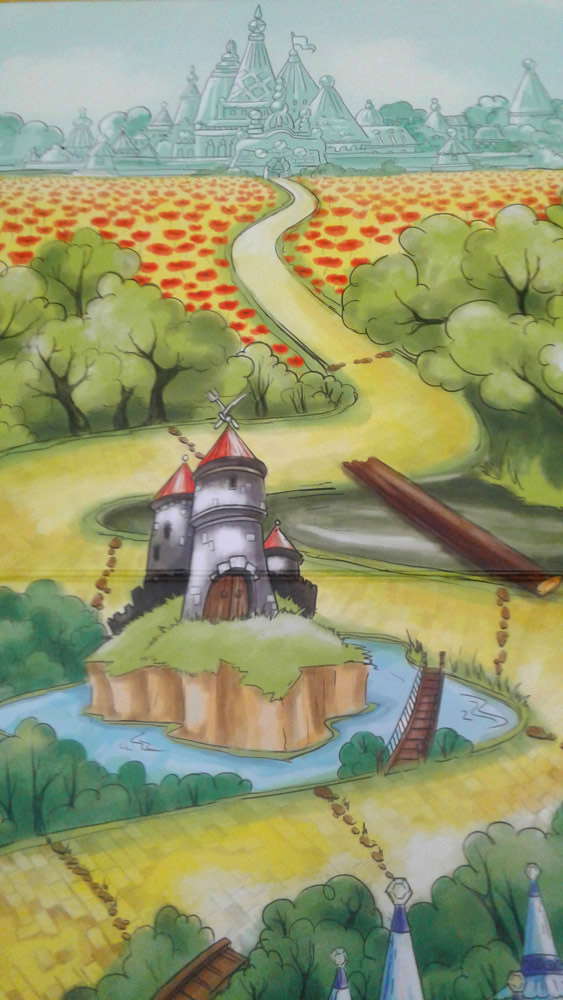
It is believed that since the leading activity in a child at preschool age is a game, his development should be built around the game, and classes should also take place in a playful way. The point is that the child performs all sorts of useful tasks with noticeably greater enthusiasm, if this is part of the game, and not part of the learning process (explicitly). This also works for schoolchildren and adults, and many useful skills can be taught in the format of a business game, for example. Another thing is that it is difficult to transfer large amounts of information in this way, so the entire educational process cannot be built in this way, but some of its parts can. First of all, it concerns what requires exercise and direct practical experience.
Add the element of hooliganism
Another version of the gunner with fantasy is the Little Day. This is a more traditional gunner: the cube indicates the number of steps, the children compete, who will go faster along the track to the end.
An additional condition: after each move, you need to complete the task. If you do, you stay standing where you stood, and if you do not want to perform, you take a few steps back. There are also many tasks that are good as part of preparation for school (pronounce a tongue twister, freeze in place until the next move, etc.), but the main emphasis is different. Then the tasks are built so that the child feels that he is naughty and indulges, and no one will scold him for it. Again, this is a very relevant thing for six years, because in a year before the school adults in chorus begin to explain to the child that he is almost a schoolboy and should behave accordingly.

In fact, “almost a schoolboy” is not the same as “already a schoolboy”, and a child, loaded with a kindergarten, preparatory classes, circles and sports sections, often there is very much the opportunity to just get through. Therefore, for children it becomes great happiness, when for the sake of diversity they are offered to do something ridiculous and hooligan (shout into the window “Happy New Year!”, To paint a mustache, depict a persistent mosquito, etc.). This is such an opportunity to be still a child, and not a big uncle with a portfolio. In elementary school, this topic remains relevant. To the first class, many children still do not feel that they have played enough, and the plank of adult demands to them is steadily rising, and the opportunity to blow up becomes the opportunity to release the tension accumulated at school.
Another important topic that affects the Lifers Day is a feeling of constraint. These or other tasks can cause anxiety (and suddenly it doesn’t work out, and suddenly they will laugh at me, and suddenly it is harmful, and suddenly they scold?), But the child always has the opportunity to choose a task or not. This is a very good situation when the child controls himself how far he is ready to go (for example, saying a tongue twister – okay, I’ll try, but screaming into the window – no longer). This is shy for children at a time convenient for them to gradually leave the comfort zone and decide on something that still seemed to them too risky or not quite decent. The shyness, by the way, can also be a big problem for the student: the teacher asks him a question, and he is silent. Not because he is silent that he does not know, but because he is shy. Some children experience such a strong alarm that they cannot even play this game: they have a fear of doing something unusual in front of others, it turns out to be stronger than the desire to win. In this situation, you need to move with the child to a psychologist and deal with what to do next.
There is a lot of text on the Leaders' Day cards – this means that non-reading children will not be able to play on their own, an adult leader is needed. An adult also needs to think in advance whether all the tasks are acceptable for him and what he will use in the game from the deck of tasks. About a third of the tasks are designed for the fact that the game takes place at home. Let's say the task where the child has to eat a slice of lemon suggests the technical possibility to go to the kitchen, get into the refrigerator and find a lemon there. This will not work at the game library (or you need to take a lemon with you).
The limits of acceptability in adults is a separate interesting topic. Between the moment when we give a familiar child a game and the moment when the child begins to develop something with the help of it, there is an intermediate link in the form of a mother who carefully evaluates the game from the point of view of its acceptability. For example, a common theme in believing families is when everything that even remotely resembles evil spirits is systematically withdrawn from the information environment in which the child is located. Superheroes sometimes also fall into this category (because they look scary), and the game can immediately be pushed to the top shelf of the closet just because it has an aggressive-looking character in a suit on the box. Another reason why a game can be quickly withdrawn is because it creates a mess at home (Chiefs' Day, for example, is very conducive to disorder).
Sketch from the game session:
Let's play sandbox today? I say.
“Come on,” answers the girl K., six years old. – By the way, we also have such sand at home.
– Oh cool!
– Yes, they gave it to us for the new year. Only my mother removed it and does not allow me to take it.
– Why?
Because we scattered it all over the floor.
Assembly Model
An interesting creative project for a six-year-old child is to make a walker yourself. A six-year-old child can draw a track and come up with plots for teleports (an attack of a crocodile, for example) – and will do it with pleasure. Number the cells, you may need help. A deck of cards with tasks can be made by common efforts, and an adult has the opportunity to customize this deck for the developmental tasks of a particular child. For example, if he clearly lacks words in his active vocabulary, add many, many vocabulary tasks.
Below are a few examples of typical tasks that are good to include for speech development and preparing a child for school.
Self control:
– do not move until the next move;
– do not say a word until the next turn;
– do not smile and do not laugh until the next move;
– stand up like a statue and freeze until the next move;
– Hold your breath for 10 seconds.
Vocabulary:
– Name five modes of transport;
– name five fruits;
– Name five vegetables;
– Name five pets;
– Name five wild animals;
– name five birds;
– Name five insects;
– name five trees;
– Name five holidays;
– Name five items of furniture;
– Name five professions;
– Name five items of clothing;
– Name five toys.
Properties:
– Name five items that are soft;
– Name five items that are sharp;
– Name five items that are sweet;
– Name five items that are bitter;
– Name five items that are brilliant;
– Name five items that are cold;
– Name five items that are hot.
Specific thinking:
– Name five items that may come in handy in the kitchen;
– Name five items that should be taken on a campaign;
– Name five items that are pleasant to receive as a gift;
– Name five items that may break;
– name five items that the doctor uses;
– Name five items that can be drawn;
– Name five products that can be put on a sandwich;
– Name five games that play on the street well;
Analogies:
– The cat has a kitten, but does the dog have?
– In the fall, it rains, and in winter?
– The car has a driver, and the plane?
– A parrot in a cage, and a fish?
– The artist creates paintings, and the potter?
– The players have a ball, and hockey players?
– The cuckoo dolls, and the owl?
Sound-letter composition:
– What are the five words that begin on U;
– What are the five words in which there is sound P;
– etc.
Coordination of movements:
– pull yourself with two fingers by the nose;
– pinch yourself for the heel;
– pull yourself with your left hand by the right ear, and with your right hand – by the left ear;
– Close your eyes and reach your nose with your finger;
– Stand on one leg, close your eyes and stand so five seconds;
– Picture a plane: stand on one leg, lean forward and put your arms to the sides – stand like that for five seconds;
– jump on one leg from the window to the door;
– raise the card from the table using index and middle fingers;
– Draw a square with closed eyes;
– Draw a circle with your left hand at the same time, and a square with your right hand.
If the child is engaged in a speech therapist, you can simply ask the speech therapist what they are doing and insert a pack of similar tasks into the deck.
Minus the first level of complexity
Technically, you can make a gunner that will be available to a child under the age of five. To do this, remove the cube with numbers and replace it with a simpler element of mechanics. For example, in the game “Owls, Au”, instead of account skill, color perception is used. The child chooses the color of three options and searches for the nearest circle on the track, which is painted in the same way: he can move the chip there. If you ask you to call the color, then at the same time you can practice find out and call colors.
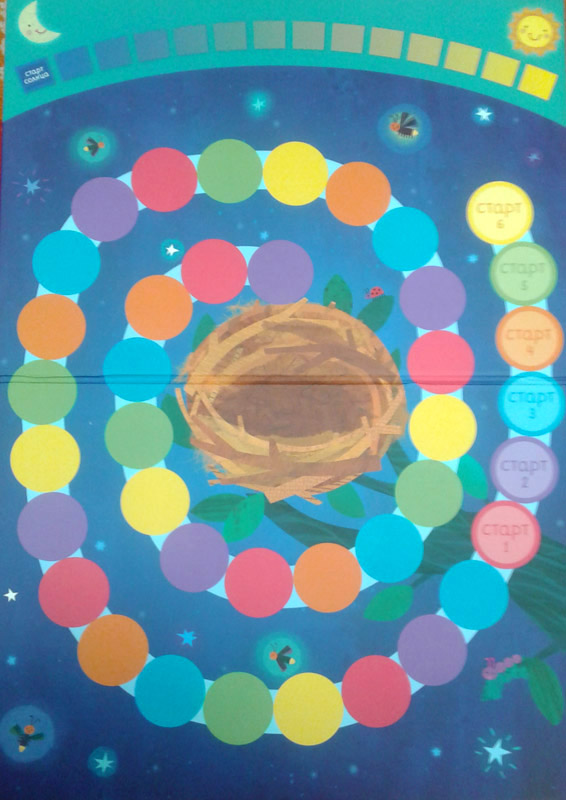
On the one hand, in this way we get the opportunity to introduce a four -year -old child to board games (with all the advantages that we examined earlier).On the other hand, at this time, a free role-playing game is significantly more relevant for the child, and if you have a choice between the sets for the role-playing game and the hill, the latter will almost inevitably lose if the plot clearly does not dominate the mechanics there.
At home, you can also make such a fermentation: in this case, the track cells are painted in six different colors, and the move is made by throwing a cube with multi -colored faces to the nearest cage of the same color. But in order for the child to really like it to play, the plot should be extremely clear, and all the characters should be large, convenient for capture figures (in “owls”, for example, there are no figures-there are cardboard chips). Let's say you can take a piece of wallpaper, depict a large bright track on it, and make the moves with your favorite toys. Here the hippo goes to the red cage, a crocodile for green, a lion to blue – and all these animals move together to the zoo (it is relevant if the child was already in the zoo and knows what it is).
What's next?
The mechanics of moving the chip through the cells from point A to point B we will see at many more complex games – as a system of calculating glasses. For example, a field for calculating glasses in a frame is the same mini-black. After the child has completely mastered this mechanics, it no longer adds complexity levels, but is used simply for clarity and convenience.
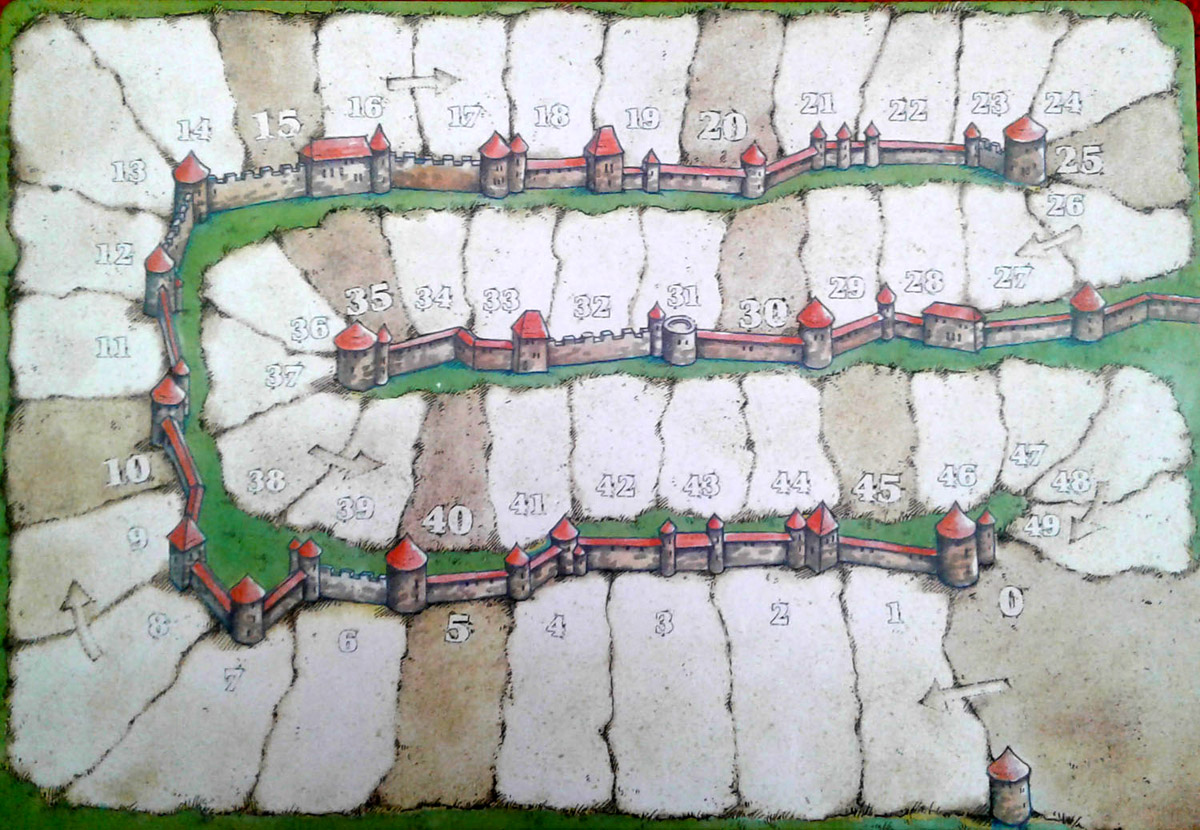
The bookmarks are naturally not limited to gunners available and useful to preschoolers. Then we will consider what else you can play with them – and why.
And one more point: I ask you to treat that I will use specific games as an example to talk about the playwrighte of children's dimensions to make out how they work and what they do with the child. I do not want to say that exactly those games that I will give as an example, better than others of the same type; These are just the games that I use in work. You may have your own interesting experience with similar games, and I want to offer to exchange it. If you or your children have your favorite games such as Brody, please write about them in a comment.
